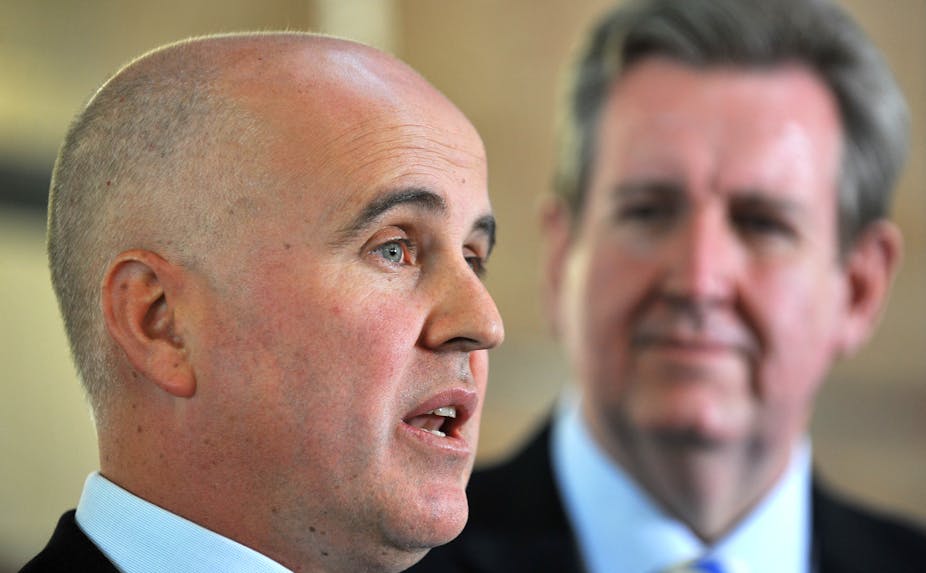NSW Education Minister Adrian Piccoli’s discussion paper on teacher education, Great Teaching, Inspired Learning released earlier this week, could be seen as yet another review for a profession literally swamped with government reviews.
But this paper has the potential to be different.
With it, I see a rare attempt to look at teaching quality in a coherent way. The media so far have jumped on the issues of minimum entry scores and subject prerequisites for those studying teaching at university – seeing it as a blueprint for how to lift teaching standards.
But the minister’s paper has been carefully structured as a series of questions designed to engage stakeholders. Read in its entirety, I don’t see a blueprint. I see commitments to quality and equity and proper support for teachers and school leaders. I see acknowledgement of the complexity of achieving these goals. And I see a genuine invitation to influence decisions about the future of education in NSW – an invitation I intend to accept.
First steps
One of the first positive signs about this paper, is where its authors have come from. They all play key roles in the three organisations that have the greatest potential to shape teachers’ work in schools – the Director-General of the NSW Department of Education and Communities, the Chief Executive of the NSW Institute of Teachers, and the President of the NSW Board of Studies.
This choice of authors alone can be seen as a unique demonstration of bringing together curriculum, pedagogy, and assessment, as well as attention to critical questions of teacher socialisation.
Moreover, the discussion paper looks at the whole career cycle for teachers and school leaders, not just pre-service education. It recognises that “great teaching and inspired learning” are unlikely to be achieved without examining and aligning initial teacher education, induction, ongoing professional learning and recognition for teachers and leaders.
The paper also strikes a good balance in several other areas: recognising excellent work in teaching and teacher education while acknowledging room for improvement; drawing on data while acknowledging time lags that weaken those data; citing evidence as a catalyst for lively debate while inviting input, including from educational researchers.
Time for more questions
In its comprehensive range of questions posed, and a substantial time period for consultation (until November 5), there is an opportunity for serious input, including fruitful conversations about the selection and interpretation of data. Through this process there’s an opportunity for questioning many of the assumptions around teacher education and professional development.
For example, the paper presents an opportunity to take a look at the view that universities have increased numbers of teacher education students since the Bradley reforms – an assumption made in some media reports. But my understanding is that the percentage of education students in universities is less in 2011 (9.3%) than it was in 2008 (9.4%) (DEEWR).
The assumptions about entrance scores for teacher education students can also be examined. At my own university, ATARs for teacher education entrants in 2012, as reported in the Newcastle Herald (July 9, 2012), are as high as 99.95 and, among students who enrolled in teaching degrees at the Newcastle campus this year, three-quarters achieved entrance scores in the 70s and above, and median scores were as high as 82. And performance data indicate that success and retention figures are higher among students in the lower ATAR bands than for those with ATARs around 70.
These two small examples highlight the importance of knowing the evidence in developing policy. Submissions to this process based on hunch or misconception are unlikely to better inform the public and political debates. Powerful narratives of personal experience, such as those dominating the radio waves since the release of the discussion paper ought not to carry equal weight with good quality evidence.
Room for improvement
Federal and state governments are all trying to improve teaching and teacher education. It would be easy to leap to critique or incite resistance to change.
Instead, I think we need to recognise both the opportunity and the danger represented by a discussion paper as wide-ranging and thought-provoking as this one.
Educational researchers and teacher educators, together with politicians and policy makers, have much to do if this discussion paper is to achieve its potential. And I hope it does in the interests of teachers and students throughout the state.

